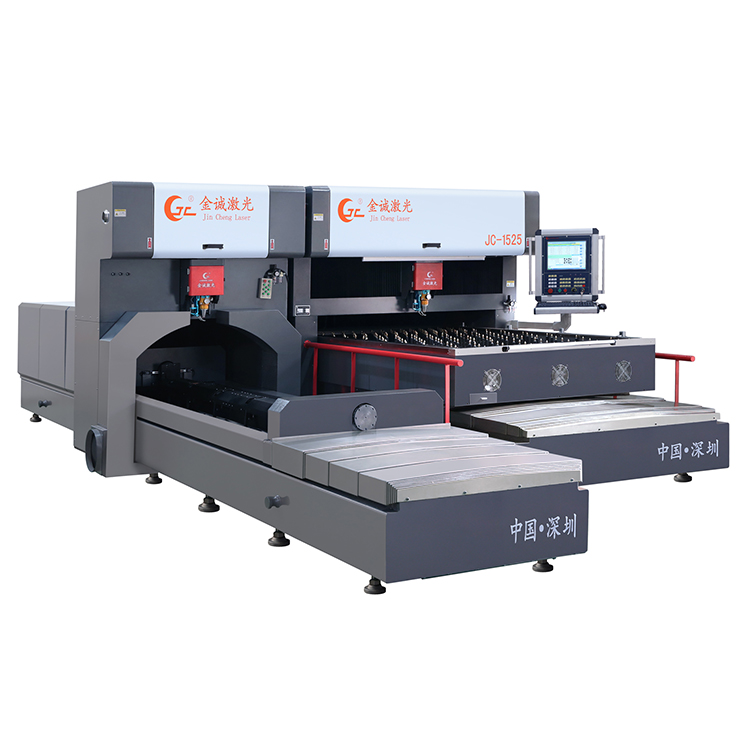- Mob.: +86 158 0626 1086
- E-mail: sales_laserdie@grandcorp.cn
During the cutting process of the laser cutting machine, the beam is focused by the lens of the cutting head into a small focal point, so that the focal point can reach a high power density, and the cutting head is fixed on the z-axis. At this time, the heat input by the beam far exceeds the part of the heat reflected, conducted or diffused by the material, and the material is quickly heated to the melting and vaporization temperature. At the same time, a high-speed airflow will melt from the coaxial or non-coaxial side. And the vaporized material is blown out to form holes for cutting the material. With the relative movement of the focus and the material, the hole forms a continuous slit with a very narrow width to complete the cutting of the material.
Take the laser cutting machine in the knife mold industry as an example, the smallest cutting width can reach 0.45mm, because the narrowest knife skin thickness is 0.45mm, and the laser can also be adjusted to cut different widths to meet different cutting needs .
At present, the outer optical path part of the laser cutting machine mainly adopts the flying optical path system. The light beam emitted from the laser generator reaches the focusing lens on the cutting head through the reflecting mirrors 1, 2, and 3, and forms a light spot on the surface of the material to be processed after focusing. The reflecting lens 1 is fixed on the fuselage without moving; the reflecting mirror 2 on the beam moves in the x direction with the movement of the beam; the reflecting lens 3 on the z axis moves in the y direction with the movement of the z axis. It is not difficult to see from the figure that during the cutting process, as the beam moves in the x direction and the z-axis part moves in the y direction, the length of the light path changes all the time.
Several key technologies of CO2 laser cutting are integrated technologies of light, machine and electricity.
The parameters of the laser beam, the performance and accuracy of the machine and the numerical control system all directly affect the efficiency and quality of laser cutting. Especially for parts with high cutting accuracy or large thickness, the following key technologies must be mastered and solved:
Focus position control technology
Focus position control technology: One of the advantages of laser cutting is the high energy density of the beam, generally 10W/cm2. Since the energy density is proportional to 4/πd2, the focal spot diameter is as small as possible to produce a narrow slit; at the same time, the focal spot diameter is also proportional to the focal depth of the lens. The smaller the focal depth of the focusing lens, the smaller the focal spot diameter. However, there are spatters in cutting, and the lens is too close to the work piece to damage the lens. Therefore, the focal length of 5"~7.5"" (127~190mm) is widely used in general high-power CO2 laser cutting industrial applications. The actual focal spot diameter is 0.1~0.4mm Between. For high-quality cutting, the effective focal depth is also related to the lens diameter and the material to be cut. For example, when cutting carbon steel with a 5" lens, the focal depth is within +2% of the focal length, which is about 5mm. Therefore, the focus is controlled. The position relative to the surface of the material to be cut is very important. Taking into account factors such as cutting quality and cutting speed, in principle, 6mm carbon steel, the focus is above the surface; 6mm stainless steel, the focus is below the surface. The specific dimensions are determined by experiments.

Copyright © Grandcorp Precision Mould ( Kunshan ) Co., Ltd. All Rights Reserved | Sitemap | Powered by 